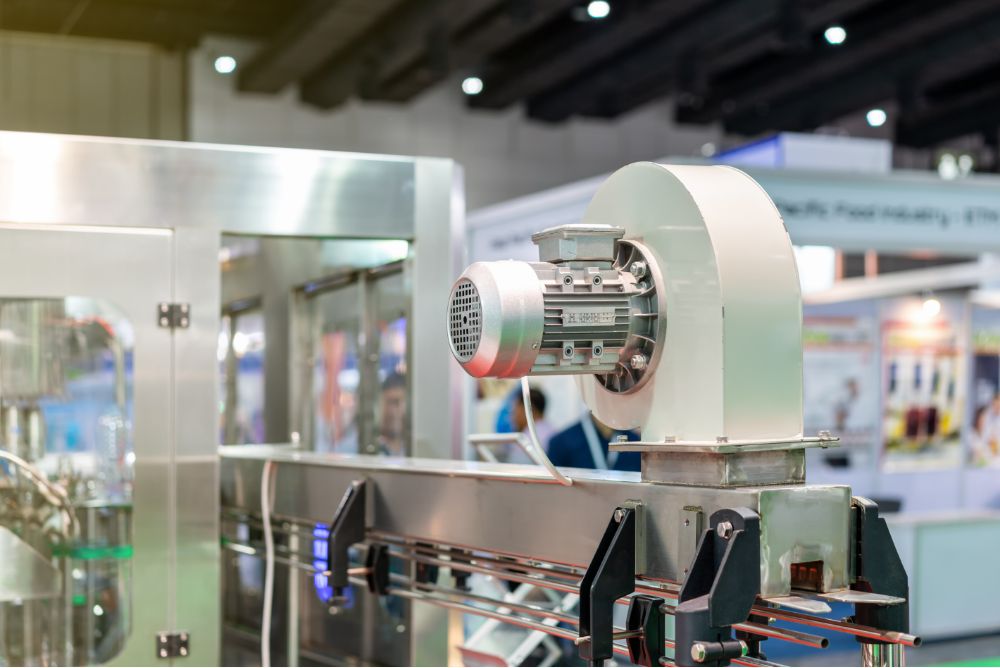Pneumatic blower packages, which may be positive displacement, side channel, or liquid ring vacuum pumps are the primary pumps that create airflow in the pneumatic system by increasing pressure. These systems provide a steady flow of motiveair, which is essential for various industrial processes, including food manufacturing.
Selecting the right blower package is key to achieving energy efficiency and optimising the performance of your pneumatic system. By understanding how pneumatic blowers operate and their various applications, you can make a more informed choice for your specific needs.
How Do Pneumatic Blowers Work and What Is Their Purpose?
The primary purpose of pneumatic blowers is to provide a consistent flow of compressed air for applications such as material handling, product aeration, or waste management.
Pneumatic blower packages provide consistent compressed air through the following:
- Air Intake: The blower draws in ambient air through an inlet.
- Rotor or Impeller Operation: Rotors or impellers compress the air by reducing its volume.
- Pressurisation: The compressed air builds up pressure.
- Release: The pressurised air exits the blower for use in specific industrial applications.
Types of Compressed Air Blowers
Different industries rely on specific blower types, depending on their operational needs. Some of the common types of pneumatic air blowers include the following:
1. Rotary Lobe Blowers (Roots Blowers)
A rotary lobe blower is a specific type of positive displacement (PD) blower that operates using two rotors rotating in opposite directions. As the rotors turn, the blower draws in air, moves it around the lobes, and propels it outward. Thanks to their rotary lobe mechanism, rotary blower packages are capable of producing a high volume of air, making them ideal for larger pneumatic conveying systems.
2. Rotary Screw Blowers
This type of pneumatic blower uses male and female rotors that rotate together, minimising the air volume between them and compressing the air. During the compression cycle, air enters the inlet, fills the compression chamber, and becomes trapped. As the rotors continue to turn, the air is progressively compressed until it is released through the discharge outlet. Compared to traditional lobe blowers, rotary screw blowers save more energy due to their internal compression mechanism.
3. Multi-Stage Centrifugal Blowers
The multi-stage centrifugal blower is a widely used type of centrifugal blower. These rotating machines increase the pressure of air or gases through centrifugal force, typically driven by an electric motor. Because they have a high-pressure tolerance and can handle significant flow rates, they are well-suited for applications requiring the generation of high pressure from small air volumes.
4. High-Speed Turbo Blowers
High-speed blowers are engineered to meet high-pressure demands and high flow rates. Like centrifugal blowers, they feature impellers on both sides that enable dual suction. These impellers are directly coupled to a permanent magnet synchronous motor, which is controlled by a variable frequency drive (VFD). This setup allows for high-speed operation while ensuring precise control over airflow.
5. Regenerative or Side Channel Blowers
Regenerative blowers are ideal for applications requiring the movement of large air volumes at low pressure. These blowers generate pressure by displacing air molecules. As the impeller spins, it draws in air, which becomes trapped between the blades. The continuous rotation of the impeller pushes the air forward, cycling it back to the base of the impeller.
Applications of Air Blowers
Along with pneumatic conveying, some of the applications of pneumatic air blowers include the following:
- Food and beverage: In the food and beverage sector, air blowers are used for multiple purposes, including drying, cooling, and aeration. They facilitate processes such as fermentation in breweries, pneumatic conveying of ingredients like flour or sugar, and maintaining hygiene through drying washed surfaces.
- Petrochemical industry: Air blowers are indispensable in the petrochemical sector, where they aid in processes like refining, gas flaring, and ventilation in hazardous environments.
- Cement industry: The cement industry relies on air blowers for tasks such as material conveying, kiln combustion, and cooling. Blowers are used to transport raw materials like limestone and clay, as well as finished products like cement powder, through pneumatic conveying systems. They also provide the airflow required to maintain proper combustion temperatures in kilns, ensuring efficient cement production.
Get Complete Blower Packages for Your Pneumatic Systems at Pneu Powders Systems
Choosing the right pneumatic blower is crucial for ensuring efficient and reliable manufacturing operations. Companies like Pneu Powder Systems specialise in providing complete blower packages designed for optimal performance.
At Pneu Powder Systems, we design, customise, and install pneumatic conveying equipment to meet your specific industrial needs. Our comprehensive solutions include pneumatic air blower packages, vacuum pumps, rotary valves, and other essential components to streamline your operations. Whether you require powder handling or food manufacturing solutions, we are committed to providing exceptional service and unparalleled expertise to optimise your manufacturing processes.
For more insights into pneumatic systems, check out our guide about air compressor systems in pneumatic conveying and how to optimise air velocity in pneumatic conveyors.





